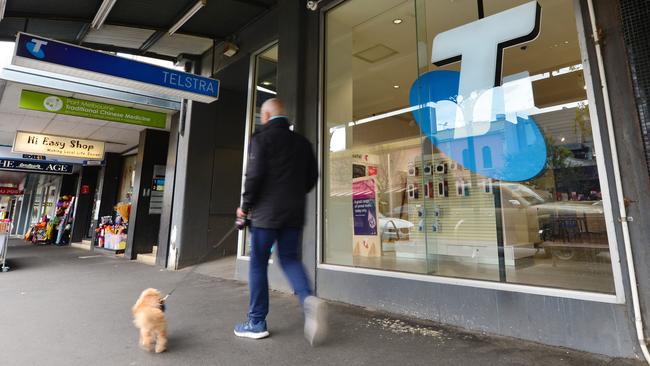Optus shares insight into regional mobile connectivity issues
Optus has suggested Telstra’s dominance in regional mobile infrastructure is stopping other telecommunications company’s from investing.

Technology
Don't miss out on the headlines from Technology. Followed categories will be added to My News.
Optus has shunned government plans to invest in roaming services, saying the option is not a “silver bullet” solution to the connectivity issues across Australia.
The federal government is investigating if co‑investment options in regional mobile carrier infrastructure would provide better services across the country.
The inquiry comes as widespread outages left many regional communities without service during recent flooding events.
Its aim is to find collaborative ways to fund improvements to mobile infrastructure services, including co-location and co-investment options across regional and remote Australia.

Speaking to a Senate committee on Friday, Optus vice president of regulatory and public affairs, Andrew Sheridan, said the government should be looking at the “holistic” picture when assessing the next step forward for creating better coverage nationwide.
“There’s an opportunity for the committee to reflect on how we can increase that sharing … and there’s very limited sharing under the existing programs,” Mr Sheridan said.
“If we are designing programs, there will still need to be policy guidelines to incentivise a multi-carrier program.”

When the committee put to Mr Sheridan whether roaming services would be a good alternative to solving the coverage issue, he shot the idea down because of a lack of incentives to co-share infrastructure between providers.
“Roaming isn’t a silver bullet to the problems you’re trying to address,” Mr Sheridan said.
“It will not deal with gaps in coverage, ultimately it interferes to incentivise to invest.”
Mr Sheridan said Telstra’s role in the telecommunication space provided a great barrier to entry for other providers that want to invest in infrastructure in the regions.
“I don’t think the incentives change is there. Telstra has a very strong (relationship) with Amplitel (infrastructure towers),” he said.
“Historically (Telstra) has very strongly defended its coverage advantage and will continue to do so.
“If you look at the totality of funding programs to date, they’ve delivered good outcomes and good coverage but they’re not delivering the best coverage.”

Mr Sheridan said if the government provided better incentives for providers to use multi-carrier infrastructure, then there would be more uptake in accessing regional and remote areas.
“I know as a carrier, my investment, if I have to share that with everyone else, I may reconsider that investment,” he said.
“Those incentives to work together haven’t been there.
“If there was a principle that taxpayer dollars was there to support all carriers … that would make it more beneficial for any individual carrier to seek a multi carrier approach then going alone.”
But Telstra’s Tasmanian regional general manager, Michael Patterson, told the inquiry on Friday he felt that too many options available to providers would make the entire system ineffective.
“I think there would be a lot more complexity if we had to get other parties involved,”
“The changes in the industry and the establishment of Amplitel … they’ve got infrastructure we can all share on or co-locate on.
“We’re absolutely on the frontline.
“I can see an avenue through to getting and helping communities to get coverage, I know it’s working with Telstra.”

Mr Sheridan said consumers also felt they could only trust Telstra in the regions despite other telcos like Optus now being able to provide greater coverage in some areas.
The inquiry heard there was even some circumstances where local governments had refused applications to build telecommunication infrastructure in the regions because it wasn’t a Telstra provider.
“The community is better off having a competitor there. It brings the incumbent to the table,” Mr Sheridan said.
“It’s a familiarity, it’s the fact that they’ve been Telstra customers. To take benefit of that funding, they would have to switch and whether the particular circumstances work for them.“
The inquiry heard another issue was power outages during emergency disasters, such as flooding, can disrupt telecommunication coverage from getting back online quickly in times of need.
“In the recent bushfires, very few of our Optus towers were impacted, it was about a handful but 150 were out because of the power supplies,” Mr Sheridan said.
“The biggest issue we find is power. Emergency roaming will not work if the issue is power.
“There’s an important opportunity to make power networks more resilient.”
Originally published as Optus shares insight into regional mobile connectivity issues



